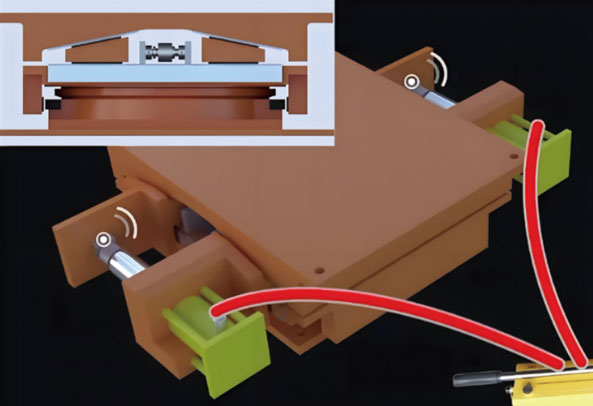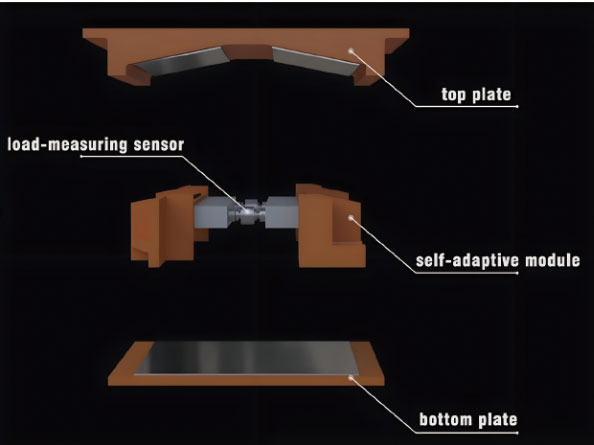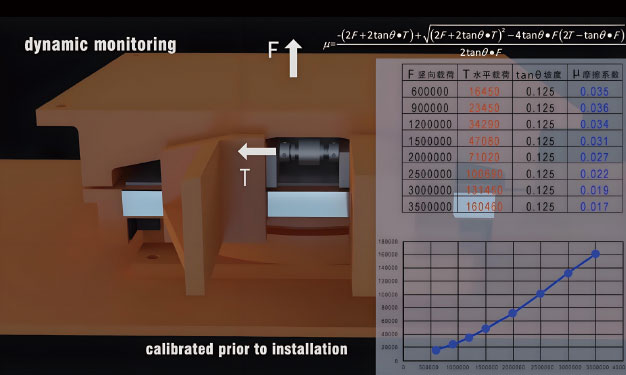
TWINSA
Smart Adapter

Hardware interface between digital twin and physical structure
Operates on structural constraints (bearings, cables, bolts)
WORLD'S FIRST metrologically validated technology for structural constraint load monitoring
Enables in-situ calibration
Integrated actuators execute load redistribution commands from TWIN.

TWINSA Smart Adaptors: Active mechanical system to facilitate IDCS
TWINSA implements an active mechanical system instead of traditional passive component-sensor combinations. This active mechanical system enables sensor calibration by replacement and ensures governing equations are accurately updated for precise measurements.
Mechanic Decomposition of TWINSA
TWINSA Smart Adapters functions as a leverage system with active features, relies on a mechanical system that transfers forces through precisely designed wedges, positioned between the upper and lower plates and the constraint system via sliding surfaces. when activation is needed, an actuation device, such as a hydraulic jack adjusts the position of the wedges and the height of the load-bearing component. This mechanism decomposes the total applied force into smaller horizontal forces, captured by the load cell. The relationship between the load cell's reading and the applied force is described by an equation that includes the friction coefficient.

Initial Calibration: Conventional holistic approach with calculation of friction coefficient
By applying a standard force, an equation is formulated to relate the load cell output to the applied force, which includes calculating the friction coefficient. Additionally, temperature and humidity com- pensations is included to maintain high linearity.
Periodic in-situ calibration: Dual calibration through Active System
Over time, creep affects both the load cell sensor and the friction coefficient, which alters the equation and compro- mises measurement accuracy.The active system plays a crucial role in obtaining the current friction coefficient in-situ through a process called "Friction Reversal." The updated friction coefficient is used to revise the equation, ensuring accurate application. Combined with the ability to replace load cells, dual calibration is effectively achieved.











